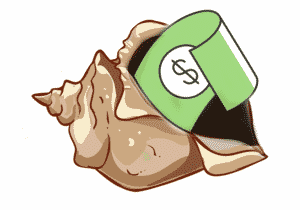Over the years, several fascinating styles of financial markets have come to the fore, one of which is binary options. Binary options are a unique derivative based on betting-style market speculation for receiving a fixed payout or losing a predetermined stake.
Despite seeming like some sort of a sports bet, trading such options do involve a substantial level of complexity. Nonetheless, they are fairly popular and are used by millions of traders to speculate in securities.
What are binary options?
Like ‘vanilla’ options, binary options are derivatives where traders have no ownership of the underlying traded market. More specifically, binary is a type of options trading working on a simple ‘all or nothing’ premise where (predictors) are presented with two outcomes of either a fixed payout or fixed loss.
The simplest form of such options is where traders determine if an underlying asset will be above or below a specified price (often referred to as the strike price) before the predetermined expiry date.
If their prediction is correct, they typically receive about 80% of their stake; should the prediction be incorrect, they would only lose the stake. However, other more complex types of options exist, which will be briefly covered later.
For the most part, contracts for binary options tend to be short-lived, ranging from 60 seconds to 1 hour, though more elaborate variants have contracts expiring after a month or even longer.
In this sense, they are vastly different from conventional options in the process, payouts, costs, and risks. Such derivatives are available for most known financial instruments such as forex, metals, commodities, equities, indices, and even elections and economic releases.
Simple binary options trade example
We’ll cover a simple up/down option in this instance, as we’ll learn in the next section of the numerous types of these derivatives. Assume a trader took a buy option on USD/JPY 110.00 (strike price) in the hopes the market will be above this rate after 30 minutes.
Let’s also imagine their stake is $100 with a payout of 80%. If the analysis was accurate and USD/JPY went above 110.00, they would be ‘in the money’ and increase their equity by $80. Conversely, if the market were below the strike money, the trader would be ‘out of the money’ and only lose $100.
Types of binary options
Interestingly, binary options are a little more complex than the traditional up/down most are accustomed to. The more complex the option, the higher the payout, with some brokers offering up to 600% of the stake. We’ll detail below all the other popular types of these options.
- Up/down (or high/low, above/below, call/put, over/under): This is the simplest form to understand but is actually broken down into two parts.
The rise/fall is where the trader bets whether an instrument will rise or fall from its current price before expiry. With higher/lower, the trader calls for when a market will end higher or lower than a specified price target before expiry.
- In/out: The in/out option is also separated into two forms. The ends between/ends outside is where the trader forecasts whether security ends between or outside two defined price targets or ranges before the end of a contract.
Conversely, the stays between/goes outside option sees the trader determine if a market stays inside or goes outside two predetermined targets or ranges before expiry.
- Touch/no touch: Here, the trader predicts if an instrument will touch or not touch a specific price level at any moment before expiry.
Over the years, other intriguing variants of options have become available like Asians, digits, reset call/reset put, high ticks/low ticks, only ups/only downs, 60 seconds, ladder, and even pairs and long term. Of course, the obtainable offerings depend on what is provided by the exchange or broker, their resident country, etc.
Why should someone consider binary options?
Aside from the extensive range of tradable derivatives, one of the biggest advantages is having a known fixed loss amount. When trading conventional spot CFDs, traders need to worry about using stop losses and other risk management techniques.
Due to volatility, misuse of leverage, and unintentional reckless trading, it is possible to lose much more than intended or experience a margin call. Moreover, the payout is also known in advance. This is unlike trading the ordinary derivative where, again, the profit is always potential and never guaranteed due to numerous variables.
Overall, the main attraction for binary options is their fixed risk, fixed payout nature, making them slightly simpler in this perspective compared to the normal trading of their underlying instruments.
Why should someone not consider binary options?
As briefly mentioned, binary options are a little more complicated than most assume. Trading these types of derivatives does involve some considerable skill in technical analysis, timing, and money management.
One of the issues with these kinds of options is the risk to reward tends to be skewed where traders need a high winning percentage to profit overall, which is especially true for the simplest form of these options. This means the reward is typically less than the money put down in most scenarios.
If one was trading the traditional asset class, the reward could be a lot greater. Alternatively, binary options traders are likely to consider other interesting binary options with more superb returns.
However, the problem here is that these are structurally to be inherently difficult to predict with any consistency, which leads to why some options are not so simple to trade compared to their counterparts in CFDs.
Final word
‘Deceptively simple’ is probably the best way to describe binary options. Although the advantage of a fixed loss is appealing, it is challenging to ensure a consistently high strike rate to deal with the pre-established reward.
Perhaps the latter reason is why many prefer to trade ordinary CFDs. Like any investment, they are not suitable for everyone, though as they say, different strokes for different folks.



